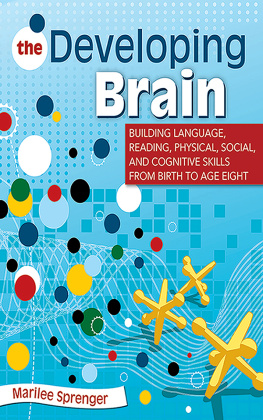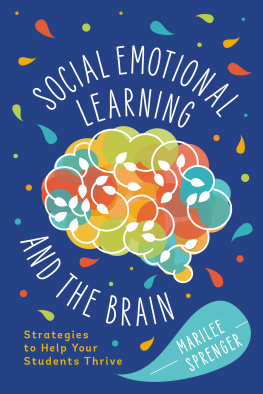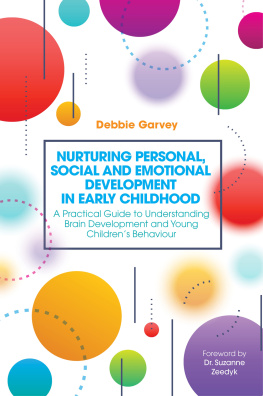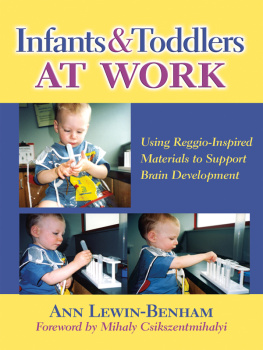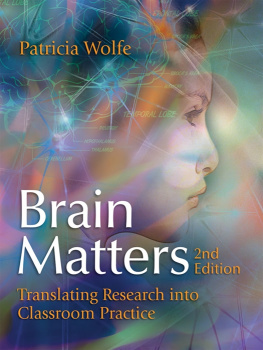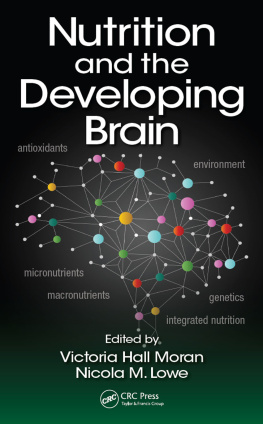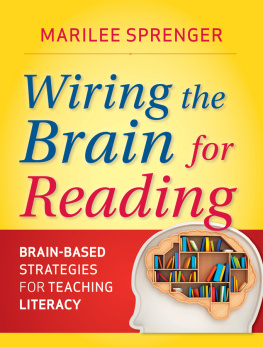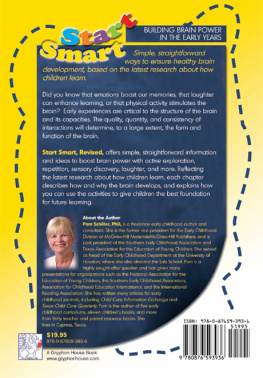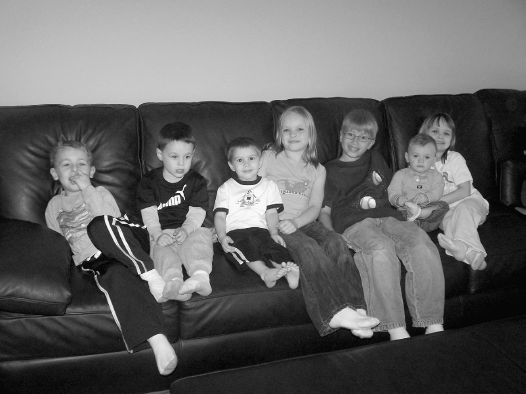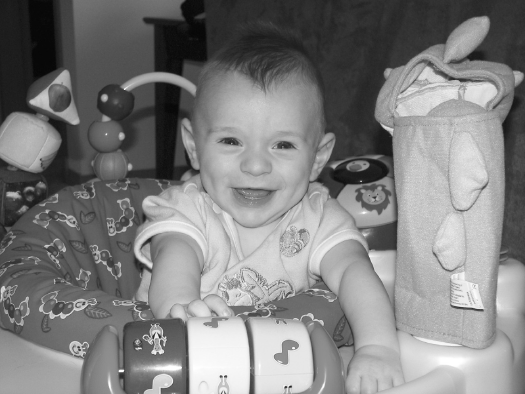the Developing
Brain
This book is dedicated to Adam, Alayna, Benjamin, Jenna, Jordan, Matthew, Noah, and especially to Jackson Joseph Sprenger and his anxiously awaited baby sister!
The children in this book are composites of many children in their respective age groups. Their descriptions depict what a child of this age could be doing at home and in the classroom. These snapshots create a picture of the type of learning and behavior development one might see at a given age. It is important to remember that each child is an individual. No two brains are alike, and no two children share the same developmental pattern.
Copyright 2008 by Corwin Press
First Skyhorse Publishing edition 2013
All Rights Reserved. No part of this book may be reproduced in any manner without the express written consent of the publisher, except in the case of brief excerpts in critical reviews or articles. All inquiries should be addressed to Skyhorse Publishing, 307 West 36th Street, 11th Floor, New York, NY 10018.
Skyhorse Publishing books may be purchased in bulk at special discounts for sales promotion, corporate gifts, fund-raising, or educational purposes. Special editions can also be created to specifications. For details, contact the Special Sales Department, Skyhorse Publishing, 307 West 36th Street, 11th Floor, New York, NY 10018 or .
Skyhorse and Skyhorse Publishing are registered trademarks of Skyhorse Publishing, Inc., a Delaware corporation.
www.skyhorsepublishing.com
10 9 8 7 6 5 4 3 2 1
Library of Congress Cataloging-in-Publication Data is available on file.
ISBN: 978-1-62636-164-5
Printed in China
Preface
You Dont Know Jack!
I have always liked my men tall, dark, and handsome. I never thought Id fall for a short, bald guy. But here I am in love. With Jack. He has blue eyes and pretty sparse light brown hair. When he smiles at me, he makes me the happiest woman alive... even though he is missing many teeth. Not a tall guy, Jack stands at about 32 inches.
Yes, I am finally in a club I couldnt wait to join. I am a grandmother.
From the moment my daughter-in-law Amy and my son Josh became pregnant I couldnt stop thinking about... this babys brain. I started my career teaching prekindergarten and kindergarten, but since then I have taught at all levels. I have been immersed in brain research as it has so miraculously unfolded over the past 20 years. I have translated it for educators and applied it at all levels. But this pregnancy caused me to take a closer look at the brain as it develops. And I am amazed.
There has been much research of late about the adolescent brain. I voraciously read the research and have shared my reactions, applications, and suggestions to teachers and parents all over the world. In writing my books, I have covered brain development. But there were always pieces missing. It seems that some information about brain development from birth to age three was available, and then most of the literature jumped to the adolescent brain. What was happening really between birth and eight? The literature would read, From the terrible twos, when the child has an abundance of connections, pruning begins to take place. The next thing I knew, I was reading about puberty!
After hearing the exciting news of the pregnancy, I knew I had to find whatever information was available about those missing years. Since then, I have been reviewing the research on early brain development and its implications. I have gathered information from neuroscience, cognitive psychology, and child development and have been able to outline the brains development from birth through adolescence. From attending conferences on the brain in early childhood to having personal conversations with some of the well-known early childhood experts, I have learned fascinating things.
We have all read about the importance of the first three years. I will describe those ages of development along with behaviors and suggestions, and then I will focus on the ages from three through eight. Why? This is when most children come in contact with educators. These are the ages for which public and private education must design appropriate curricula. These are the ages when teachers can begin to make a difference.
As teachers, we have the unique and overwhelming responsibility of changing childrens brains on a daily basis. We have the opportunity to take children from varied backgrounds and nurture them. We have the power to influence the development of successful people who are enlightened citizens and caring individuals.
Time and again the research has shown us that development is a combination of nature and nurture. DNA provides the blueprint that the brain will follow as it unravels its mysteries, and we can provide the nurturing to make the most of its development.
As the neuroscientists who wrote The Scientist in the Crib (Gopnik, Meltzoff, & Kuhl, 1999) so eloquently state,
Nurture is our nature, and the drive to learn is our most important instinct.
In this book you will get to know Jack and other young children as they grow and develop. I will provide you with a design of how the brain develops at each age level. Keep in mind two things:
- Children grow at individual paces. There can be a large variance in brain development.
- Boys and girls develop differently. Brain development in girls is generally faster than in boys, just as their physical development is accelerated.
I have provided you with the best research that I have been able to acquire. There are many researchers responsible for this new area of understanding. I am so appreciative of the work of the following experts: Harriett Arnold, Laura Berk, Maurice Elias, Lise Eliot, Alison Gopnik, Jane Healy, Elinore Chapman Herschkowitz, Norbert Herschkowitz, Jerome Kagan, Andrew Meltzhoff, Patricia Kuhl, Chip Wood, the National Research Council Institute of Medicine, and the American Academy of Pediatrics. There are many more neuroscientists, cognitive psychologists, and child development experts working in the area of early childhood. The National Association for the Education of Young Children works diligently to provide information to help all young children learn.
I also want to thank my colleagues who interpret the research. By sharing and comparing, we try to present the best applications possible. I am especially grateful to Carla Hannaford, Eric Jensen, Kathy Nunley, David Sousa, Robert Sylwester, Donna Tileston, Pat Wolfe, and Rick Wormeli.
This book would not have been possible without the guidance of Faye Zucker, Stacy Wagner, and my new editor, Hudson Perigo. These professionals along with their excellent staff provided gentle guidance through the process of writing this book.
I hope you find this to be a sensible guide to help you understand the students in your classroom and to help you design the best learning experiences possible.
No, you dont know Jack, but you soon will!
Acknowledgments
We gratefully acknowledge the contributions of the following people:
Linda Brault

